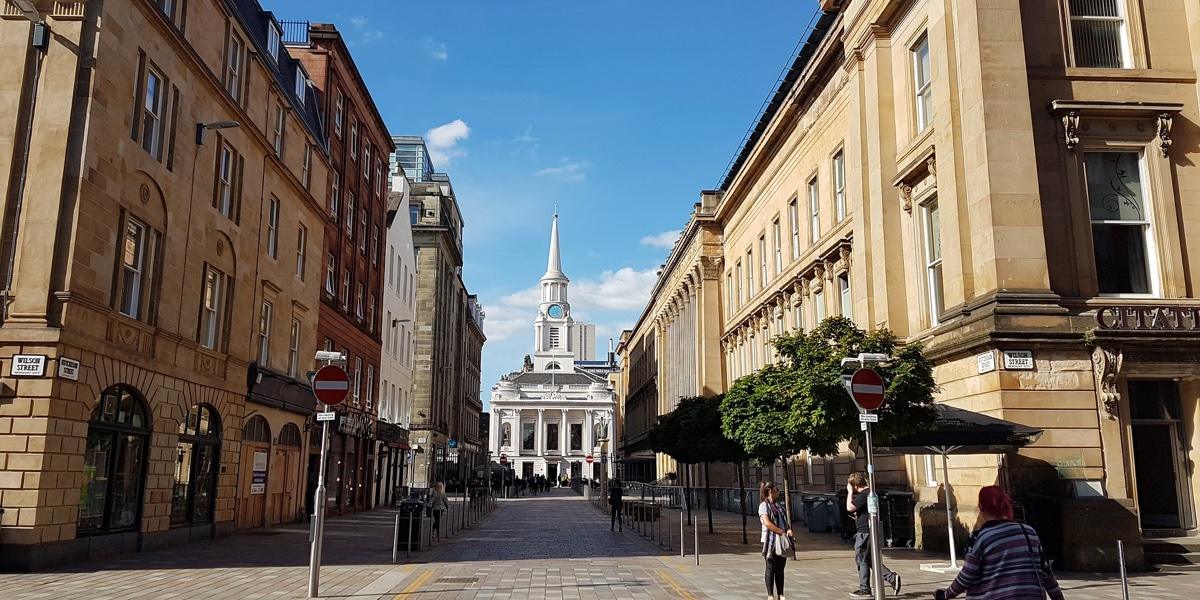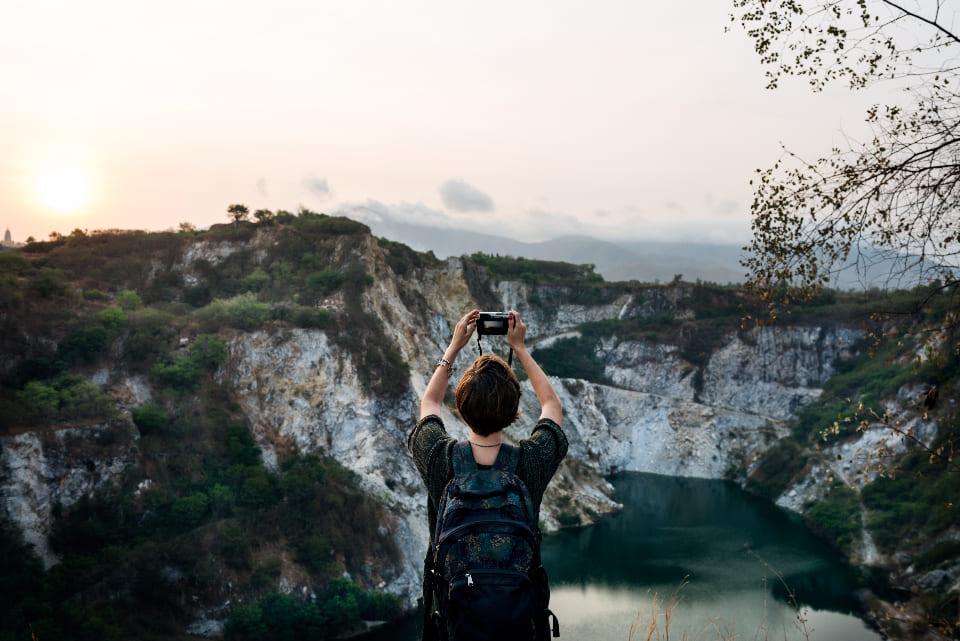Exploring Scotland: Uncovering the Most Captivating Places to Visit

Scotland is a sovereign nation and the most northern of the four parts of the United Kingdom. It predates its southern counterpart, England, in its nationhood gaining its sovereignty in the 9th century. The weather in Scotland reaches the extremes and has provided a harsh landscape for its people throughout the years. The Scottish people came from Ireland in the 5th century and landed on the west coast of Great Britain, creating a unique culture apart from its United Kingdom counterparts. If the people aren’t enough of a reason to visit Scotland, the landscapes that range from rolling mountains to white sandy beaches will take your breath away. There are historic castles, lochs that hold monsters, and an enchanted forest for you to visit. You can celebrate like a Viking, don a kilt, or run through Glasgow in a Santa suit. Scotland is a treasure and a must-visit destination.
Edinburgh
There is no better place to begin your visit to Scotland than to its capital Edinburgh. You can explore Edinburgh Castle which sits on top of a dormant volcano that rises above the city. The grounds of the castle are vast but don’t miss your opportunity to see the Honours of Scotland and The Stone of Destiny. When you have completed your visit to Edinburgh Castle take a stroll down the Royal Mile that connects Edinburgh Castle to the Palace of Holyrood House. As you walk the ‘Scots Mile’ you will encounter the new and old parliaments, law courts, a cathedral, churches, shops, restaurants, cafes, and pubs. Don’t just keep your tour above ground but go underground and unveil the mysteries of the Edinburgh Vaults. The vaults were completed in 1788 and were home to workshops, taverns, and storage places for workers for the first 30 years then became a hotspot for the homeless and a variety of criminal activity. When you take a tour today, don’t be surprised if you encounter paranormal activity. To complete your tour of Edinburgh, come back to the top of Edinburgh at Arthur’s Seat where you will have a 360-degree view of Edinburgh.
Isle of Skye
When you begin your visit to the Isle of Skye start with the 4.5-mile hike around Quiraing. It doesn’t matter if you hike in the rain or sunshine, the view will be gorgeous. After completing your hike around Quiraing, explore the Fairy pools that are fed by a series of small waterfalls. You will experience crystal clear pools with a mist that hovers above giving the island its name: the Island of Skye, or Mist. Continue your enchanting adventure of the Isle of Skye as you visit Dunvegan Castle and Gardens. Here you will have the ability to roam the 41,000 acres of the McLeod Estate and encounter the Cullin Mountains, Dunvegan Pier, St. Kilda. Dunvegan Castle and Gardens is committed to conserving and protecting its natural and built heritage for present and future generations to enjoy. Conclude your visit to Isle of Skye the same way you began with a hike, but this time take the hike of Old Man of Storr. This hike is the most famous and busiest walk on the Isle of Skye where you will start and finish at the same point and in between will witness the Trotterish ridge that was created by a massive landslide.
Loch Ness
The only thing you may know about Scotland before you travel there is the mythical Loch Ness Monster, and you can search for “Nessie” at Loch Ness. Nessie was first brought to the world’s attention in 1933 and has had varied folklore and sightings throughout the years. As you search for Nessie, you may lose sight of your original intentions as you continue to cruise the scenic waters of Loch Ness and are amazed at the beauty surrounding you. Loch (the Scottish word for lake) Ness is a freshwater lake that is fed by the River Ness, also from which the loch receives its name. You should not only stay on the waters when you visit Loch Ness but should come ashore and tour the ruins of Urquhart Castle. The current ruins are from the 13th to 16th centuries when Urquhart played a pivotal role in the Wars of Scottish Independence. When you visit the castle, you will have some of the most amazing panoramic views of Loch Ness and the Highlands district. Continue to come inland and visit the Loch Ness Centre and Exhibition at the Drumnadrochit Hotel. This is where Mrs. Aldie Mackay began the legend of Nessie when she reported seeing a “whale-like fish” and “water beast”. The Loch Ness Centre and Exhibition is more than just the history of Nessie but explores 500 million years of history and ancient Scottish myths, legends, and scientific research.
Glasgow
Glasgow is the most populous city in Scotland and the fourth most populous city in the United Kingdom and has a rich history and a dynamic, vibrant, and modern culture. To experience this modern cultural scene there is no better place than the Kelvingrove Art Gallery. Opening in 1901, the Kelvingrove Art Gallery and Museum are a favourite to locals and visitors alike. There are 22 galleries to explore, stunning architecture, and a family-friendly atmosphere. Make your next stop outside as you tour the Glasgow Botanic Gardens. These gardens were begun in 1817 by botanist Thomas Hopkirk in partnership with the University of Glasgow. The educational mission continues today as you can access the extensive library within the gardens or learn from the botanists that continue to preserve and grow the Gardens today. If you would like to learn more about the history, and especially the beginnings, of Glasgow you will need to explore the Riverside Museum. Glasgow sits at the junction of Rivers Kelvin and Clyde and became a popular destination for fishermen and merchants alike. The museum traces this history and the ships that were built to help create Glasgow what it is today. When evening comes, enjoy the live local music and entertainment at the pubs and clubs around Glasgow. There is a mix of historic and modern entertainment that you may encounter.
Stirling
Your visit to Stirling has to begin at Stirling Castle as it is one of the largest and most historical castles in Scotland. Since its construction, it has been an important fortification for the defense of Scotland and one of the most used royal residences. Stirling Castle has also been the site of several crownings of kings and queens; including Mary Queen of Scots in 1542. Continue your historic tour of Stirling by visiting the battlefields of Bannockburn and Stirling Bridge. Bannockburn is where Robert the Bruce defeated Edward II and was the culminating victory in the Scottish War of Independence. The Battle at Stirling Bridge was where Scotsmen William Wallace and Andrew Moray defeated English forces to begin the end of the First War of Scottish Independence. Not all the sites to see in Stirling are related to history and battles as you need to visit the engineering marvel of the Falkirk Wheel. The Falkirk Wheel is a rotating boat lift that connects the Forth and Clyde Canal with the Union Canal. The connection of these two canals connects the waterways between Glasgow and Edinburgh for the first time since 1930. Conclude your time in Stirling by hiking the Ochil Hills and witnessing the breathtaking views of the surrounding countryside of Stirling.
Isle of Mull
You do not initially come to the Isle of Mull for the people, and they are alright with that. Instead, you come to the Isle of Mull for encounters with the unique wildlife: eagles, otters, red deer, moorland and woodland birds, seabirds and duck waders, seals, whales, dolphins, and even basking sharks. The uniqueness of the Isle of Mull continues as you pull into port at Tobermory Village and witness the colourful homes that surround the bay where legend has it that a Spanish Armada sank in 1588 that was filled with gold bullion. Do not stop as you pull into port but continue your journey to the standing stones of Lochbuie. Here is where you will find nine flat stones each standing 6 feet high and in a perfect circle 42 feet in diameter. There are three outlying stones with one being in line with the setting sun at the winter solstice, another being in line with the declination of the sun on the winter quarter days, and the last stone having an unknown meaning. End your time on the Isle of Mull with a boat tour of Fingal’s Cave and its historic acoustics.
The Highlands
A trip to Scotland must include time spent in the Highlands with its traditional Gaelic culture and stunning beauty. Begin by exploring the stunning landscapes of Glencoe that trump the city’s tragic history: the Massacre of Glencoe in 1692 when the Clan MacDonald were killed by forces sent by King William III. It is then onto a scenic train ride through Cairngorms National Park where you will ride through more high-level mountain land than anywhere else in Britain and Ireland. As you ride you will witness rare mountain plants and scarce wildlife like the Scottish crossbill in the largest Caledonian forest. As part of your visit to the Scottish Highlands you must visit the Culloden Battlefield for a poignant experience. Here was the final Jacobite Rising that was seeking to restore the Stuart monarchy to the British throne, but in less than an hour, 1,000 Jacobite men were slain. Conclude your time in the Highlands by visiting Scotland’s first National Park: The Trossachs National Park featuring Loch Lomond. Here you will encounter the dividing line between the Highlands and the Lowlands with varied landscapes that include rugged hills, wooden nooks, and enticing waters.
The Scottish Borders
Locals will correct you to simply say “The Borders” but either way this is the southernmost part of Scotland. Begin your time in the Scottish Borders where the heart of the country is said to be buried: Melrose Abbey. Melrose Abbey is a partly ruined monastery that was founded in 1136 by Cistercian monks and is where Robert The Bruce is buried. Melrose Abbey is more than a famous cemetery but one of the most magnificent examples of medieval church architecture in Great Britain. Continue on the Borders Abbeys Way walk to Jedburgh Abbey which was also founded in the 1100’s but as an Augustinian abbey and built in both the Romanesque and Gothic styles. The market towns of Peebles and Kelso will also be points of interest when visiting the Scottish Borders. Peebles is a historic market town that played a pivotal role in the wool industry through the 19th and 20th centuries and then changed to a health tourism destination that promoted water cures for pain. Kelso will draw you into its city as you will want to visit the Kelso Abbey and Floors Castle which were the two centres of power throughout its history. If you want to walk the entire width of Scotland one way to do it is to walk the 214 miles from the Irish Sea to the North Sea. The trek will take you from 12 to 16 days, but you will encounter picturesque views and historic sites. Make one last stop in the Scottish Borders at Abbotsford House. Abbotsford House is the former residence of novelist Sir Walter Scott and is an extraordinary estate with gardens, the main house, and a visitor centre to learn more about the grounds.
Orkney Islands
The Orkney Islands have been inhabited for at least 8,500 years by Mesolithic and Neolithic tribes, then the Picts, colonized by Norway in 875, and absorbed by the Parliament of Scotland in 1472. Begin your tour of Orkney Islands back in time at the prehistoric wonders of Skara Brae. Skara Brae is Europe’s most complete Neolithic settlement from 3180 BC. Continue your journey through time on the Orkney Islands by visiting the Stones of Stenness that were erected over 5,000 years ago. There are 4 of the original 12 stones that stood upright, each with a height of up to 18 feet and centered around a central hearth. You will want to also visit another massive stone circle known as the Ring of Brodgar where 36 of the original 60 still standing. There are also 13 prehistoric burial grounds and a large ditch that surrounds the stone circle. One of the historical sites on the Orkney Islands that researchers know the meaning of is also a site you will want to visit. Maeshowe chambered tomb was built in 2,800 BC and its architecture is only found on Orkney Island. Conclude your time on Orkney Island by coming back into the present and visiting the Italian Chapel. The Italian Chapel was constructed when two Nissen huts were joined together by Italian soldiers that had been captured during the war. It was decorated by one of the Italian prisoners who was also an artist: Domenico Chiocchetti and is still one of the most beautiful attractions on Orkney Islands.
Isle of Arran
When you come to visit the Isle of Arran you will be joining in the line of people who have inhabited this island since the Neolithic period. While visiting you can explore the scenic coastline by boat or walk along coastline paths. Either by boat or while walking you will encounter picturesque villages and the charming people who make these villages their home. You will also have the opportunity to enjoy some of the local’s favourite outdoor activities such as hiking and cycling. You will also want to visit Brodick Castle and its gardens while on the Isle of Arran. Brodick Castle was built in 1510 but was in a long line of fortresses that have sat on that site since at least the 5th century. It was strategically important during its active time but now has on show an impressive collection of period pieces. Do not leave the Isle of Arran without visiting the Arran Distillery. Here you can sample some of Scotland’s finest whiskey while viewing the countryside.
Frequently Asked Questions
When is the best time to visit Scotland?
- To have the most sunlight and the best weather you will want to visit during the spring (March to May) and fall (September to November). If you are interested in the many festivals that occur in Scotland, you will need to check their calendar of events.
How can I explore the Scottish Highlands without a car
- The Scottish Highlands are navigable without a car. You can take the train and watch the countryside go by. Travel the scenic routes by bike. Take the subway around Glasgow. Hike one of the many walking trails. Sign up for a private tour.
Are there any famous Scottish festivals or events to attend?
- Yes. In August the Edinburgh Fringe, which is an arts festival.
- Hogmanay is from December 30 to January 1 where the new year is celebrated as the Vikings did to mark the winter solstice.
- Burns Night is January 25th when the poet Robert Burns is celebrated.
- Celtic Connections run from January through February where folk music is celebrated.
- Highland Games are from May through September and are a series of historic athletic competitions.
- Spirit of Speyside is in May and is a week-long whiskey festival.
- Up Helly Aa is from January to March and is an immersive experience into Scotland’s Viking heritage.





